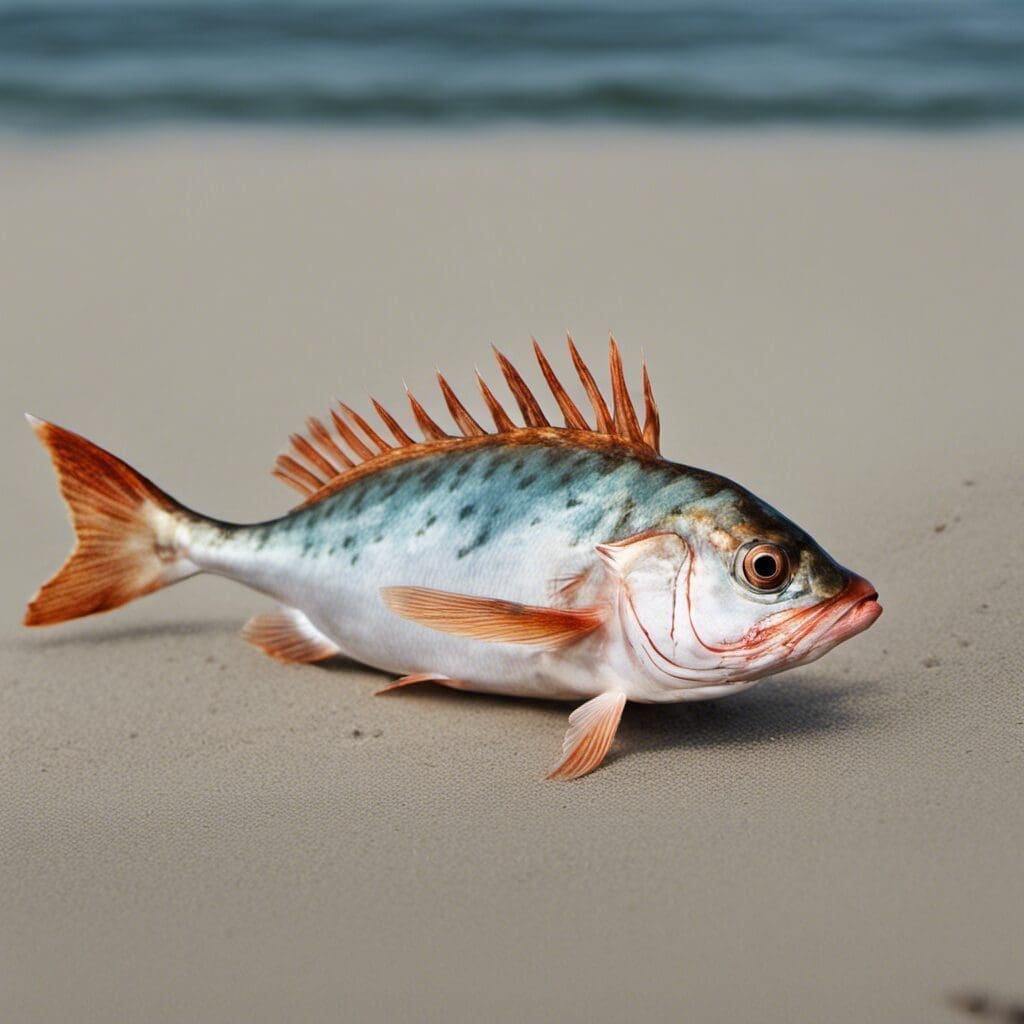Introduction
Gurnards are fascinating fish species belonging to the family Triglidae. Their distinctive characteristics and behavior patterns make them an interesting exploration for fish enthusiasts and anglers alike.
Conservation Status
Gurnards are listed as “Least Concern” on the International Union for Conservation of Nature’s Red List. Thanks to their wide distribution and large population, they are not currently facing any major threats or conservation efforts.
| Current Status | Conservation Efforts |
|---|---|
| Least Concern | N/A |
Statistics
Gurnards typically have a moderate size. They can grow to lengths of 15 to 50 centimeters (6 to 20 inches) and weigh between 1 to 3 kilograms (2.2 to 6.6 pounds). The average lifespan of a gurnard is around 10 years.
| Average Length | Length Range | Average Weight | Weight Range | Average Lifespan |
|---|---|---|---|---|
| 35 cm | 15-50 cm | 2 kg | 1-3 kg | 10 years |
Distribution
Gurnards are widespread across the world oceans, particularly in the North Atlantic, the Mediterranean, the Black Sea, and the eastern Pacific Ocean. They are also known to migrate for spawning, with specific patterns varying by species.
Habitats
Gurnards usually inhabit sandy or muddy bottom environments in both coastal and offshore waters. They can be found at depths ranging from 20 meters (65 ft) to over 300 meters (1,000 ft). Their temperature range is between 8-24°C, typically in warmer seas.
When and Where to See
Gurnards are typically more active during the daytime. They can generally be spotted year-round, but the best time to see them is during their breeding period, which is in the summer.
Best Fishing Locations
Gurnards can be caught from a variety of locations across the globe. Some top spots include:
1. The North Sea
2. The Channel Islands
3. Brittany, France
4. The Mediterranean Sea
5. The Black Sea
6. English Channel
7. South African Coast
8. New Zealand Coast
9. The Pacific Northwest
10. The New England Coastline
How to Catch
Successful gurnard fishing generally requires natural bait, such as worms or small fish. Common techniques include bottom fishing and trolling. Best time to fish is during daylight hours, particularly in the morning and late afternoon.
Identification Guide
Gurnards have a distinctive appearance, with a large head, and a body that tapers to a comparatively small tail. They are known for their brightly colored pectoral fins, which can be fanned out to reveal a dazzling display of blues, greens, or reds. They showcase a variety of colors and patterns, but most commonly are a mix of brown, red, and orange.
Culinary
Gurnards are considered a good eating fish, with a mild and slightly sweet flavor. They can be grilled, baked, fried, or used in a stew. Additionally, they are low in fat and a good source of protein.
Additional Information
Gurnards have unique behaviors, such as ‘walking’ along the sea floor using their pectoral fins. Major threats to gurnards are overall marine pollution and habitat degradation, but they are robust and adaptable species. Regarding cultural significance, gurnards do not hold particular cultural or historical significance, but are respected by anglers for their fighting spirit when hooked.
References and Further Reading
For more in-depth information on gurnards, the following resources may be useful:

